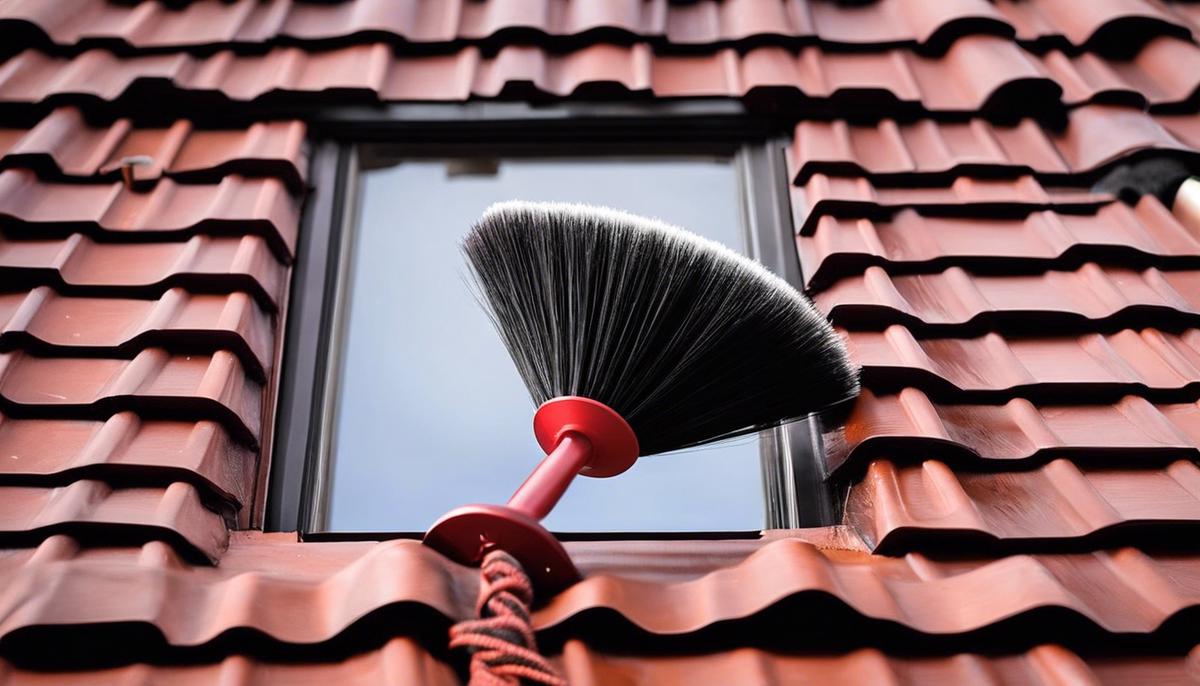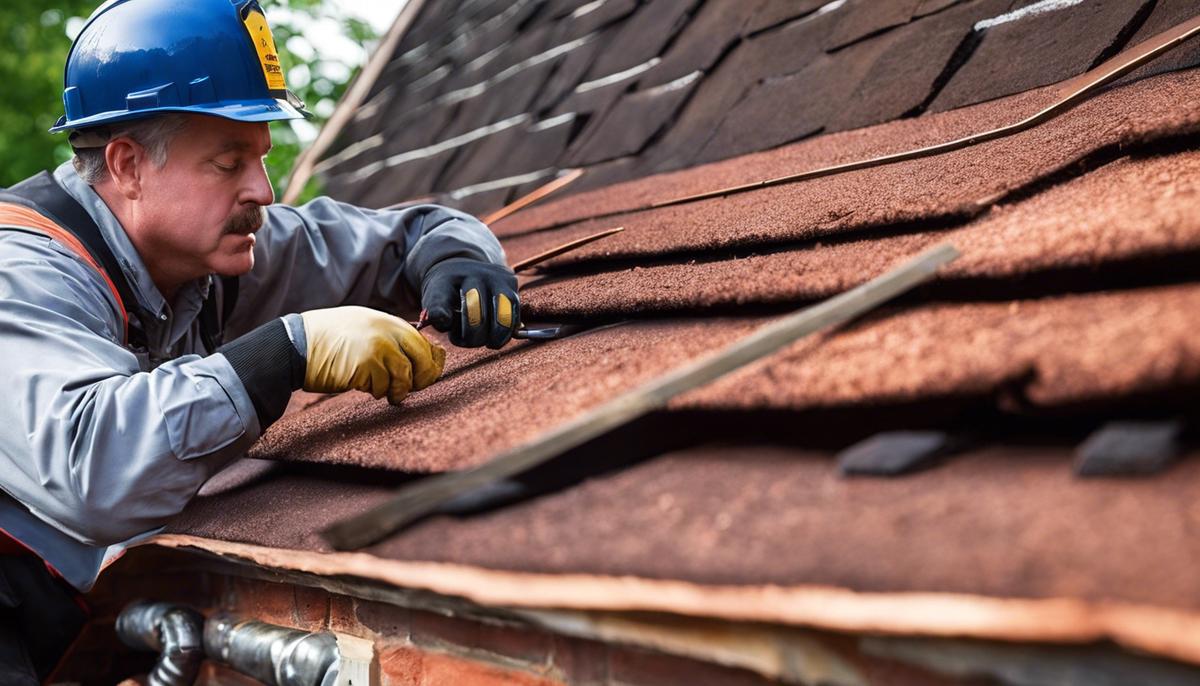Maintaining a safe and efficient chimney system is an essential aspect of home upkeep that should never be overlooked. A well-maintained chimney not only ensures the safety of your household but also enhances the overall performance of your heating appliance. This essay will guide you through the fundamentals of annual chimney maintenance, starting with how to conduct a thorough visual inspection for any signs of deterioration, blockage, or hazardous buildup. Armed with this knowledge, homeowners can confidently assess the condition of their chimneys and take the necessary steps to preserve the integrity of this crucial structure.
Inspecting the Chimney
The Hearth of the Matter: Keeping Your Chimney Safe and Sound
As the leaves begin to put on their autumnal garb, and the scent of pumpkin spice flirts with our senses, one thought often warms the heart quicker than a cup of hot cocoa: the cozy comfort of sitting by the fireside with our loved ones. But before we light the first log or spark up the gas fireplace, let’s chat about something incredibly important, yet often overlooked – chimney safety.
A well-maintained chimney not only ensures that our families can gather around the hearth safely but also safeguards our homes from potential dangers. The question burning in our minds: How often should one thoroughly inspect the chimney to keep the home fires burning safely?
The National Fire Protection Association prescribes that chimneys, fireplaces, and vents should be inspected at least once a year. This check-up is crucial to spot any deposits, blockages, and structural issues that may lead to unsafe conditions or, worse, chimney fires. And while a yearly glance is good, a thorough inspection is the secret to real peace of mind.
This thorough inspection should include a keen-eyed look at the integrity of the chimney structure and flue, ensuring that no cracks or missing pieces could let dangerous gases seep into the home. One should also be on the lookout for creosote buildup – a byproduct of burning wood that can accumulate in chimneys and become highly flammable.
If the fireplace is a frequent flyer in the household routines, ramping up inspections to twice a year might be prudent. These check-ins are especially essential after severe storms or earthquakes, which could compromise your chimney’s structure or lining.
In a world where we balance so many tasks, it might be tempting to let this one slide, but here’s a warm little tip: Align your chimney inspection with another annual event (like a fall family tradition) to help remember it’s time for a chimney health check. After all, as the hearth is the cornerstone of many cherished family memories, ensuring its safety means those memories can be made without worry.
Burning wood might be the epitome of homestead bliss, but those switching gears with gas fireplaces aren’t off the hook. Ventilation systems also require a clear pathway for fumes to escape, and a blockage in these can be just as dangerous as a blocked wood-burning chimney.
For those who like dabbling in a bit of DIY, a cursory visual inspection can be done personally; however, when it comes to a comprehensive examination, calling in the professionals is the way to go. Chimney sweeps have the expertise, tools, and experience to identify issues that might escape the untrained eye.
As we nestle into our homes and prepare to enjoy the warmth and ambiance that a fireplace brings to our spaces, let’s not forget the importance of chimney care. A little foresight will ensure that the only things flying down the chimney are charming holiday tales, and the only sparks flying are those of comfort and joy shared amongst family and friends. Happy and safe hearthing!

Cleaning the Chimney
Clearing the Way: A Family-Safe Method to Clean Creosote from Your Chimney
There’s nothing quite like gathering around a warm, crackling fireplace with family. However, to ensure these cozy moments remain safe, keeping the chimney free of creosote buildup is crucial. Creosote, a tar-like byproduct of burning wood, can become a hazard if ignored. So, roll up those sleeves—it’s time to talk about the safest and most effective method to clean that chimney!
Before starting, it’s essential to have the right tools for the job. Secure a chimney brush that matches the size and shape of the flue, along with extension rods to reach the entire length of the chimney. A sturdy ladder, protective goggles, gloves, and a dust mask are also necessary—safety first!
Step One:
Preparation is key. Start by laying down a tarp or plastic sheeting around the hearth to catch any falling soot or debris. If there’s a damper, open it to allow access to the flue.
Step Two:
It’s time to get a closer look. Take a flashlight and peer up into the flue from the fireplace. This visual guide will help gauge the amount of creosote buildup present.
Step Three:
From the rooftop, ensure the chimney cap is removed (if present) and start the brushing process. Attach the chimney brush to an extension rod and begin to scrub the inner walls of the flue with a controlled, up-and-down motion. This action will loosen the creosote, allowing it to fall to the bottom of the chimney.
Step Four:
Go the extra mile for safety. Creosote can be quite stubborn, and sometimes brushing alone won’t do the trick. For those tougher areas, consider using a creosote removal product. These products can be applied directly to the buildup and are designed to break down the creosote, making it easier to brush away.
Step Five:
Back down to the hearth, it’s time for the bottom-up approach. Using the same technique, continue to scrub the chimney from the bottom, ensuring the entire flue is addressed. This touch-up ensures you haven’t missed any spots that could pose a fire risk.
Remember, maintaining a regular cleaning schedule will prevent creosote from becoming a significant threat. While light cleaning can be performed periodically, an annual deep clean is highly recommended, particularly before the start of the burning season. After the process, reward the hard work by disposing of the creosote debris safely—creosote should never be burned or composted—then sit back and enjoy a safe, clean fireplace.
Creating a home that’s not only loving and warm but also secure is critical. Share these practical steps with friends and fellow parents, because when it comes to family and fireplaces, ensuring everything is ‘clean as a whistle’ is part of the genuine warmth of a well-kept hearth.

Chimney Repair and Protection
Now that you’ve got a handle on the various aspects of chimney safety and maintenance, let’s dive into the crucial indicators that it may be time to repair or protect your trusty chimney.
First up, the tell-tale signs of water damage. If you notice any staining on the interior walls around the fireplace or dampness inside the firebox, these are red flags. Remember, chimneys are like sentinels against water, but when they falter, they expose your home to potential water damage.
Next, be on the lookout for spalling or flaking bricks. This might seem purely cosmetic, but it’s far from it. Spalling is often a result of moisture entering the masonry. If the freeze-thaw cycle starts to break down the bricks, it’s time for some TLC on your chimney.
It’s also key to pay attention to your chimney crown – that’s the top layer of your chimney. When you start to see cracks or deterioration, it’s not just an eyesore, it’s a gateway for moisture and pests—an open door you certainly don’t want unfixed.
White discoloration, or efflorescence, is another indicator. This chalky residue means moisture has been making its way through your chimney walls, and simply cleaning it off won’t nip the problem in the bud. It’s time to call in the pros.
Ever heard crumbling noises when you light a fire? That could be bits of flue liner falling inside the chimney. Since the flue liner’s integrity is paramount for safe fireplace operation, this calls for immediate inspection. A cracked or deteriorating liner can lead to serious risks, including hazardous gas leaks or even house fires.
Finally, let’s not forget about the chimney cap or chase cover. Spotting rust or dents can mean that it’s not workings as it should. The cap is there to keep out rain, animals, and debris—all of which can cause issues down the line if left unchecked.
Heat, fire, and smoke are all within the job description of your chimney, but they can also spell disaster if your chimney isn’t in good repair. So, whether it’s brickwork trouble or lurking moisture, it’s always best to act sooner rather than later.
For the perfect blend of warmth and safety at home, every puff of smoke and warm flickering light depends on your chimney’s condition. Keep an eye out for these warning signs, and your cozy fireside gatherings will be all the safer and merrier for it. Remember, prevention is always better than cure—especially when it comes to the well-being of one’s home and family.

Armed with the insights outlined above, homeowners are now equipped to uphold the safety and efficiency of their chimneys through diligent maintenance practices. While those with a do-it-yourself spirit can handle basic repairs and routine cleaning, recognizing when to enlist the expertise of a professional is also a critical component of responsible chimney care. By staying vigilant and proactive in chimney maintenance, you ensure the warmth that your fireplace provides does not come with hidden dangers, but with peace of mind and the reassurance of a secure home environment.
